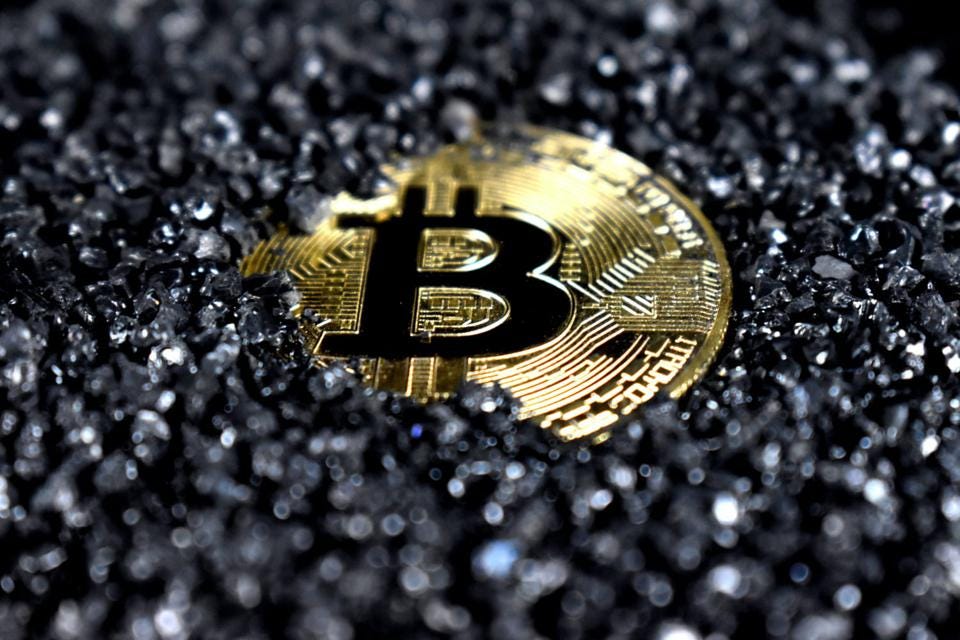Read Part 1, Part 2, Part 3, Part 4, Part 5 and Part 6 if you haven’t already.
We have come a long way in our discussions on cryptos. Today, let’s look at some of the important functions one should look out for in crypto investing.
Most of the existing participants are momentum players. Because of the excessive daily volatility, participants are mostly technical traders. There are many who are part of a pump and dump scheme where they move from one crypto to another crypto until they really get caught by deeper pocket players like a deer in the headlights. Without regulation, it’s a dog-eat-dog world.
I don’t believe with such limited history and extreme volatility can one come up with a positive-expectancy trading strategy. I don’t wish to burst anyone’s bubble. , no one should fall prey to the crypto magicians who promise untold millions unless they can show you an audited performance statement.
So what should be your approach? Be focused only on long-term investing unless the thrill of trading gives you more satisfaction by losing money over time. The main thing to note is what is its ‘use case’ or what it actually does. Is the use case potentially disruptive and has global implications. XRP and XLM meet these qualities.
Meanwhile, Bitcoin mostly is a ‘store of value’ in my opinion. One can think of it as digital gold. You put money into it and the value can rise or decline. Because of its limited supply and it uses some supply every time there is a transaction, it has that scarcity element. This can tend to keep its value over time. But many other cryptos that came after Bitcoin have developed various functionalities and use-cases.
Ethereum, the second-largest crypto, is an open-source technology that allows developers to build on the technology and create other cryptocurrencies on top of it. Some crypto developers give away 50% of the supply to Vitalik Buterin the Russian-born Canadian founder of Ethereum. Ethereum has ushered in a big trend called decentralized finance (DeFi). But the gas fees (transaction fees paid to miners on a blockchain network in order to get the user’s transaction to be included in the block) are killing. The gas fees are paid in Ether. There will be severe competition for Ethereum when Flare Sparks brings smart contract functionality to XRP on a separate blockchain. This will allow you to deposit your cryptocurrency and earn interest as if it were your own bank. More on that later.
Another feature one should be looking at is how much money can the crypto handle or ‘capacity’. The amount of money that runs on the crypto, either by investing in it to hold it or using it for transactions, will affect its value. XRP was created to handle central bank digital currencies or CBDCs. By being a bridge asset, it can easily convert one currency into another in under three seconds. XRP has a function called on-demand liquidity (ODL). What it will do is it will free up all the money that is locked up with correspondent banking with an average of three days of settlements. Globally, that amount is estimated to be around $ 27 trillion. The US debt currently is about $29 trillion. SWIFT which went live in 1977 and is used by more than 11,000 banks and financial institutions is only a messaging system. But XRP is a settlement system as well. XRP positions itself as the only protocol capable of being a global messaging and settlement meta-system.
Central banks move trillions of dollars around the world. If we factor in the transaction value of derivatives, central banks will be running quadrillions of dollars over the XRP ledger making it the most valuable cryptocurrency.
SWIFT will either work along with XRP or their usage will become obsolete over time. This is what MasterCard CEO Michael Miebach said at a panel discussion in Davos recently, “I do not expect SWIFT, the most widely used cross-border payment messaging system to exist after five years”.
Scarcity creates value in anything, so the fewer coins that are available and if the supply gets more limited, theoretically the value should be higher. The best example is Bitcoin but that is not the only consideration and must be taken into account with the other factors. XRP has a total supply of 100 billion coins and it was all pre-mined. Currently, only 45 bio XRP coins are in circulation. The balance of 55 bln are held by Ripple. They had a stated policy of releasing one billion coins every month to maintain liquidity but I am not sure if that is still in play. Another thing to consider is they may burn some of their stock which will increase the value of the existing tokens in circulation. XLM did burn part of their inventory.
Another important point is what is the adoption rate. The faster a cryptocurrency is adopted the faster its price will rise. If many companies start accepting your crypto as money, or more developers start using your blockchain to enable faster and ESG compliant transactions, it will be a big boost and will be adopted faster by more participants.
XRP has near-global adoption and acceptance except in the USA because of the pending SEC litigation. SEC has argued that XRP is a security and so far their argument is not getting any traction with the public or with the Department of Justice. This pending case has been the main reason that XRP’s price has remained suppressed. Once XRP gets regulatory clarity, it will be re-listed in over the 50 odd exchanges in the US.
Another major point is the actual demand for the crypto and is it receiving favorable press? XRP’s real use case will start to manifest once this case is out of the way. It has courted a lot of attention because of this case - a blessing in disguise. A company that has followed all regulations and wanted to be fully compliant was sued by the SEC for mysterious reasons. The truth will be out soon and XRP will be a game-changer.
Finally, how large is the crypto community? How many people are invested in it? How many companies use crypto? In XRP’s case, it is not easy for Americans to buy XRP but now they can through the Uphold exchange. American institutions will not invest in XRP unless this case is settled. Once settled, XRP will be the first currency to get regulatory clarity. Watch this short video from Rosie Rios, the 43rd US Treasurer, whose signature appears on nearly $1.8 trillion dollars out of the $2 trillion in circulation. She is an advisor and a Ripple board member. Stay tuned for more!
If you received value from this post, and you’d like to send some back, or if you’d like to signal to me to continue spending time on these types of explorations, feel free to buy me coffees (thank you!):
So, there we go. Thanks for reading Breezy Briefings. If you enjoyed this, I'd really appreciate it if you could take a second and tell a friend. Honestly. It makes such a big difference.
Forward this email. Recommend the newsletter. Share on Twitter, WhatsApp, Telegram, LinkedIn, Slack, wherever!
Join Breezy Briefings’ Official Telegram Channel: https://t.me/BreezyBriefings
Abraham George is a seasoned investment manager with more than 40 years of experience in trading & investment and multi-billion dollar portfolio management spanning diverse environments like banks (HSBC, ADCB), sovereign wealth fund (ADIA), a royal family office and a hedge fund. Currently, he is a co-founder of a new hedge fund where foreign citizens can invest in Indian growth stocks like Tanla operating in hyper-growth markets like CPaaS.



